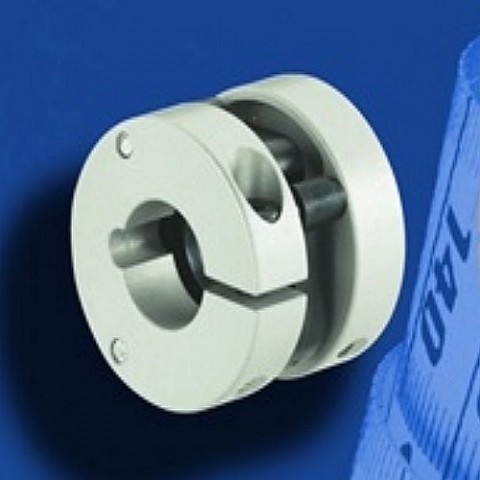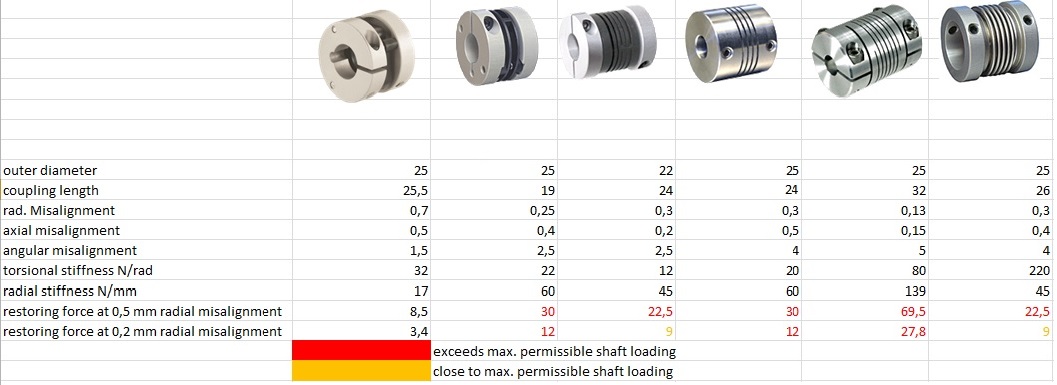

A rotary encoder, also called a shaft encoder, is an electro-mechanical device that converts the angular position or motion of a shaft or axle to an analog or digital code. There are two main types: absolute and incremental. Since they do not transmit torque, the connecting shaft couplings' primary function is to absorb shaft misalignment without backlash and high torsional stiffness.
By the nature of the design, some shaft couplings, with high radial stiffness values can cause high radial loads whilst compensating for parallel shaft misalignment. As a result, an ideal encoder coupling should minimise radial loads on the encoder bearings to enhance the life expectancy of the entire encoder. The following table shows how the Schmidt Controlflex shaft couplings has some of their lowest radial restoring forces on the market against other shaft coupling designs. Team this up with good torsional stiffness and you have the idea encoder coupling.
Basis of encoder couplings test: Outer diameter of 25 mm.
Basis of encoders: Outer diameter 58 mm; average permissible radial loads of encoder bearings between 10-80 N

Give Peter a call on 01386 421005 for further details
